Introduction
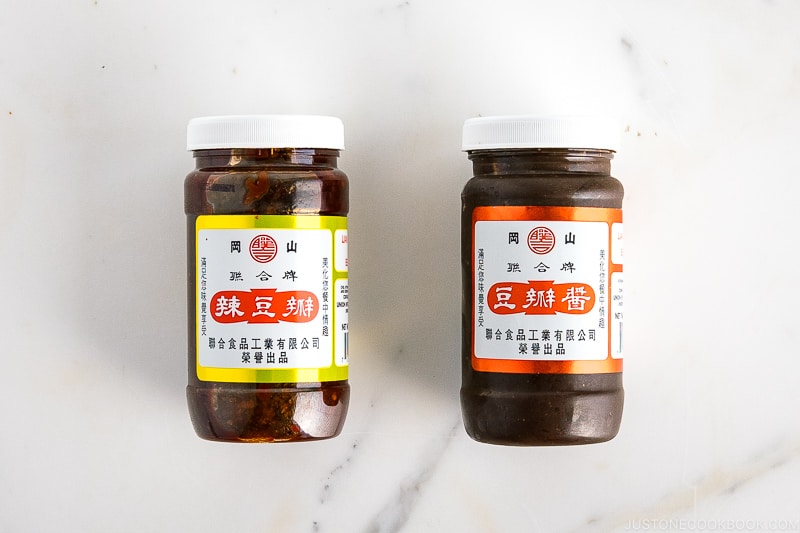
Doubanjiang and Gochujang are two popular chili pastes that play a significant role in Asian cuisine. These spicy condiments add depth and complexity to a wide range of dishes, from stir-fries to soups and marinades. While Doubanjiang originates from China and Gochujang hails from Korea, they both offer unique flavors and spice levels that can elevate any culinary creation. In this article, we will explore the differences between Doubanjiang and Gochujang, their cultural significance, flavor profiles, and even share some delicious recipes featuring these versatile chili pastes. Whether you’re a fan of spicy foods or simply curious about Asian flavors, this article is sure to pique your interest. Let the Doubanjiang vs Gochujang showdown begin!
Overview Of Doubanjiang And Gochujang
Doubanjiang and Gochujang are two distinct chili pastes that play a significant role in Asian cuisine. Doubanjiang, originating from China, is a spicy fermented bean paste known for its intense flavor and salty-savory profile. On the other hand, Gochujang, a popular condiment from Korea, offers a slightly sweet and tangy taste, with a smoother texture compared to Doubanjiang. Both pastes add depth and complexity to dishes, making them valuable ingredients in various recipes. Though they share similarities in terms of spiciness, their unique flavors and textures make them incomparable substitutes for one another.
Cultural Significance In Asian Cuisine
Doubanjiang and Gochujang hold a significant cultural significance in Asian cuisine. Doubanjiang, often referred to as the “soul of Sichuan cooking,” is a staple ingredient in Chinese cuisine. It is an essential component in popular dishes like Mapo Tofu and Twice-Cooked Pork, contributing to the distinctive flavors of Sichuan cuisine. On the other hand, Gochujang is an integral part of Korean cooking, playing a vital role in dishes such as Bibimbap and Tteokbokki. These chili pastes embody the rich culinary heritage of their respective countries and are celebrated for their ability to enhance the flavor profile of traditional Asian dishes.
Doubanjiang: The Spicy Fermented Bean Paste
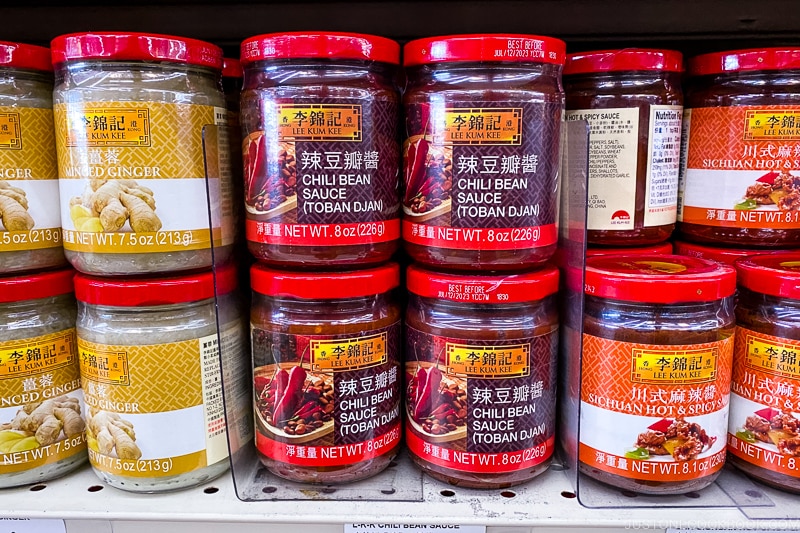
Doubanjiang is a spicy fermented bean paste that hails from China. Made from a combination of broad beans, soybeans, and chili peppers, it undergoes a fermentation process that gives it a unique tangy and umami flavor. The paste is chunky in texture, with visible pieces of fermented beans adding a hint of complexity to each bite. Doubanjiang is a versatile ingredient that can be used as a base for stir-fries, marinades, and sauces, adding a rich and savory taste to a variety of dishes. Its distinct flavor is a hallmark of Sichuan cuisine and is beloved by food enthusiasts worldwide.
Doubanjiang Ingredients And Preparation
Doubanjiang is made from a combination of fermented broad beans, soybeans, chili peppers, and spices. The beans and soybeans are first soaked, cooked, and mashed before being mixed with chili peppers and spices. The mixture is then placed in large clay pots and left to ferment for several months. The fermentation process gives Doubanjiang its unique tangy and umami flavor. After fermentation, the mixture is finely ground and packed into jars for storage. The chunky texture and complex flavors of Doubanjiang make it a versatile and beloved ingredient in Sichuan cuisine.
Doubanjiang Flavor Profile And Usage In Dishes
Doubanjiang is known for its bold and complex flavor profile. It has a rich umami taste with a slightly salty and tangy undertone. The spiciness of Doubanjiang can vary depending on the brand and type, but it generally adds a moderate level of heat.
In Sichuan cuisine, Doubanjiang is a key ingredient in many traditional dishes. It is commonly used in stir-fries, hot pots, and braised dishes to enhance the overall flavor. Its chunky texture and robust taste make it a great choice for adding depth and complexity to marinades, dressings, and sauces. Whether you’re making Mapo Tofu or Kung Pao Chicken, Doubanjiang is an essential component that brings a distinct and flavorful kick to your dishes.
Gochujang: The Korean Chili Paste
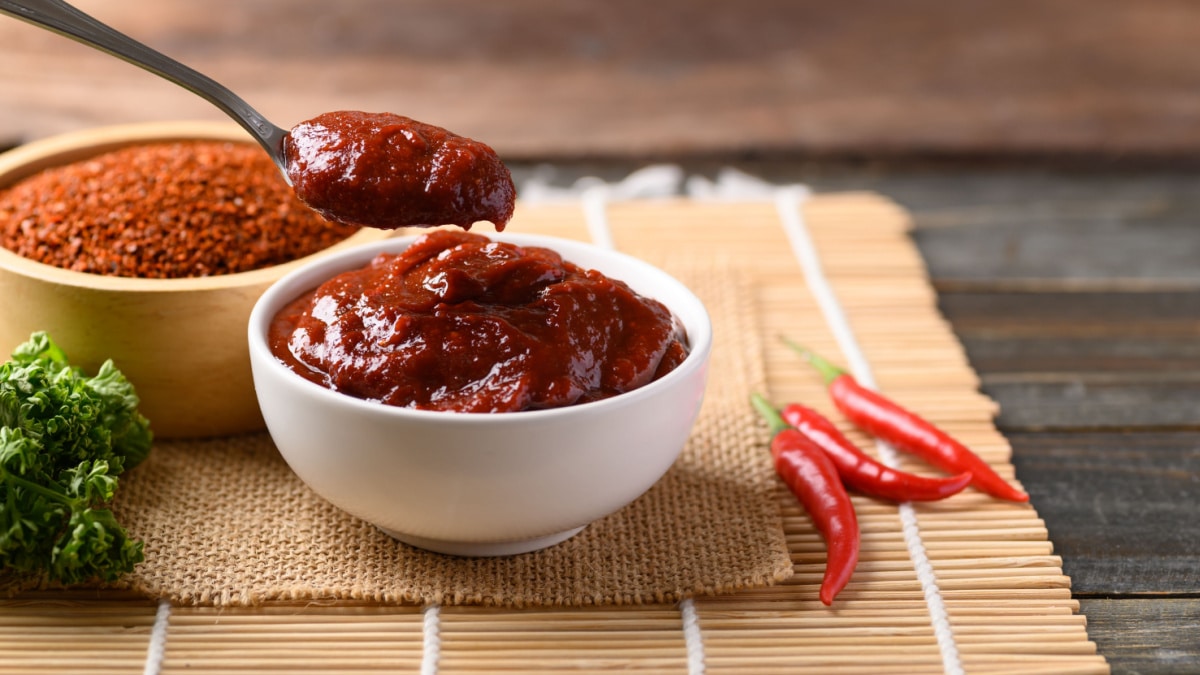
Gochujang is a popular Korean chili paste that adds a unique and distinct flavor to dishes. Made from fermented soybeans, red chili powder, glutinous rice, and salt, gochujang has a slightly sweet and tangy taste. Its smooth texture and vibrant red color make it visually appealing as well. Gochujang is commonly used in Korean cuisine to marinate meats, make spicy sauces, and add depth to stews and soups. It provides a balanced combination of heat, sweetness, and umami, making it a versatile ingredient in a variety of Korean recipes.
Gochujang Ingredients And Traditional Making Process
Gochujang is made from a combination of fermented soybeans, red chili powder, glutinous rice, and salt. Traditionally, the process starts with cooking the rice until it becomes soft and sticky. The cooked rice is then combined with soybeans and red chili powder and left to ferment for several months in clay pots. During the fermentation process, the flavors of the ingredients intensify and develop the characteristic tangy and slightly sweet taste of Gochujang. The paste is then ground and strained to achieve a smooth texture before being packed and sold.
Gochujang Spiciness Levels And Culinary Applications
Gochujang offers a moderate level of spiciness, making it suitable for those who enjoy a mild kick in their dishes. However, its flavor is not solely defined by its spiciness. Gochujang has a tangy and slightly sweet taste, giving it a unique flavor profile. It is widely used in Korean cuisine to add depth and complexity to various dishes. Gochujang can be used as a marinade for meats, a sauce for stir-fries, a condiment for noodles, or a base for stews and soups. Its versatility allows it to elevate the flavors of both traditional Korean recipes and fusion dishes.
Contrasting Flavors And Heat Levels
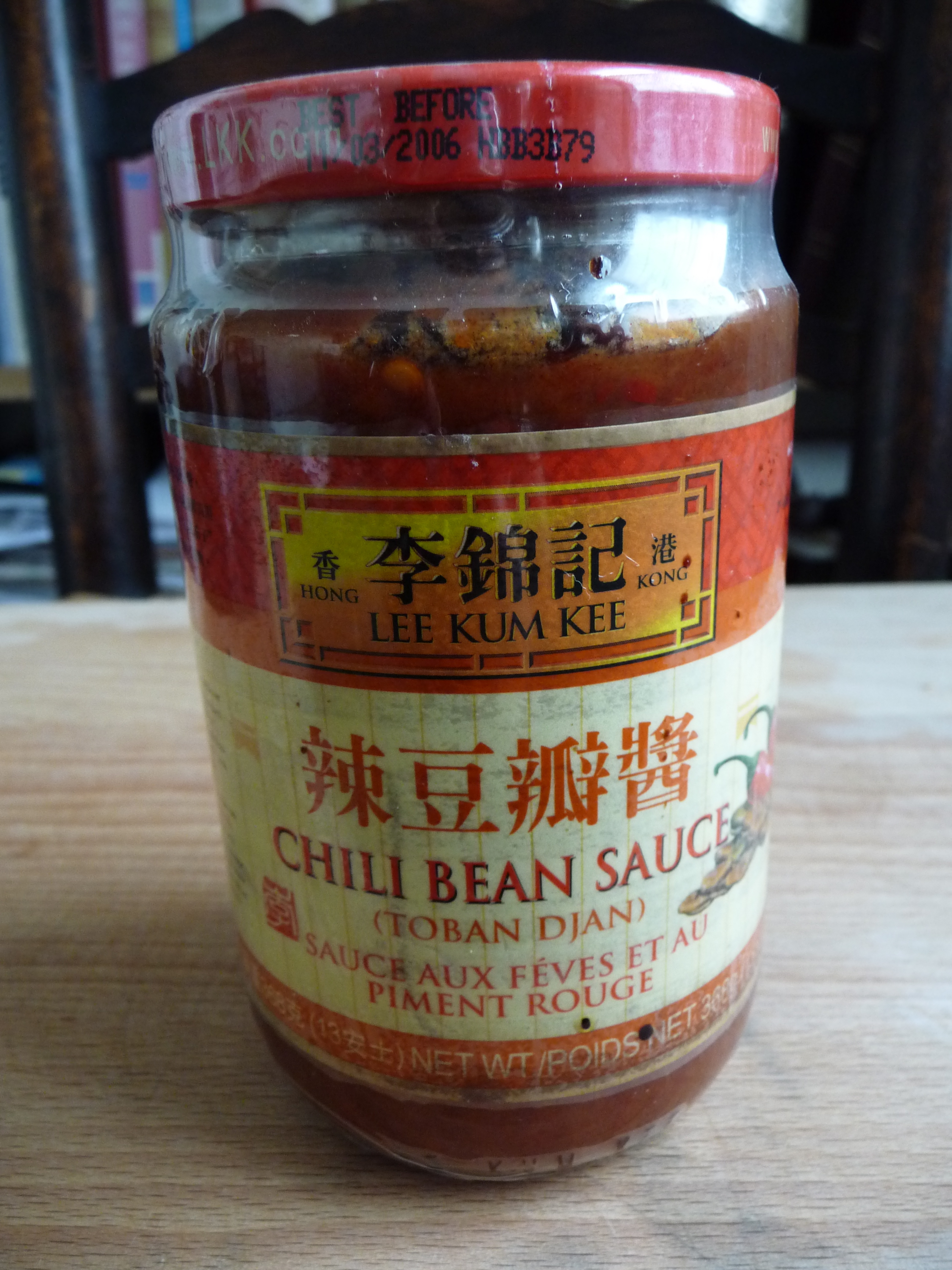
When it comes to flavors and heat levels, Doubanjiang and Gochujang offer distinct characteristics. Doubanjiang has a more intense, salty, and savory flavor with a hint of fermentation. Its chunky and ragged texture adds a unique element to dishes. On the other hand, Gochujang is known for its tangy and slightly sweet taste. It provides a moderate level of spiciness, making it suitable for those who prefer a milder kick. The contrasting flavors and heat levels of these chili pastes allow for a wide range of culinary applications in Asian cuisine.
Doubanjiang Vs Gochujang: Flavor Comparison
When comparing the flavors of Doubanjiang and Gochujang, it becomes evident that they offer distinct taste profiles. Doubanjiang has a more intense, salty, and savory flavor with a hint of fermentation. Its chunky and ragged texture adds a unique element to dishes. On the other hand, Gochujang is known for its tangy and slightly sweet taste. The contrasting flavors of these chili pastes allow for a wide range of culinary applications in Asian cuisine. Whether you prefer the umami richness of Doubanjiang or the tangy sweetness of Gochujang, both pastes provide a flavorful kick to your dishes.
Spice Levels And Versatility In Recipes
Doubanjiang and Gochujang offer different spice levels and versatility in recipes. Doubanjiang is known for its intense and spicy flavor, adding a kick to dishes. Its rich and salty taste pairs well with stir-fries, soups, and braised dishes. Gochujang, on the other hand, provides a tangy heat with a hint of sweetness. It is a staple in Korean cuisine and is widely used in marinades, dipping sauces, and stews. Both pastes can be used as a condiment, marinade, or seasoning to enhance the flavors of a variety of Asian dishes.
Recipes With Doubanjiang And Gochujang
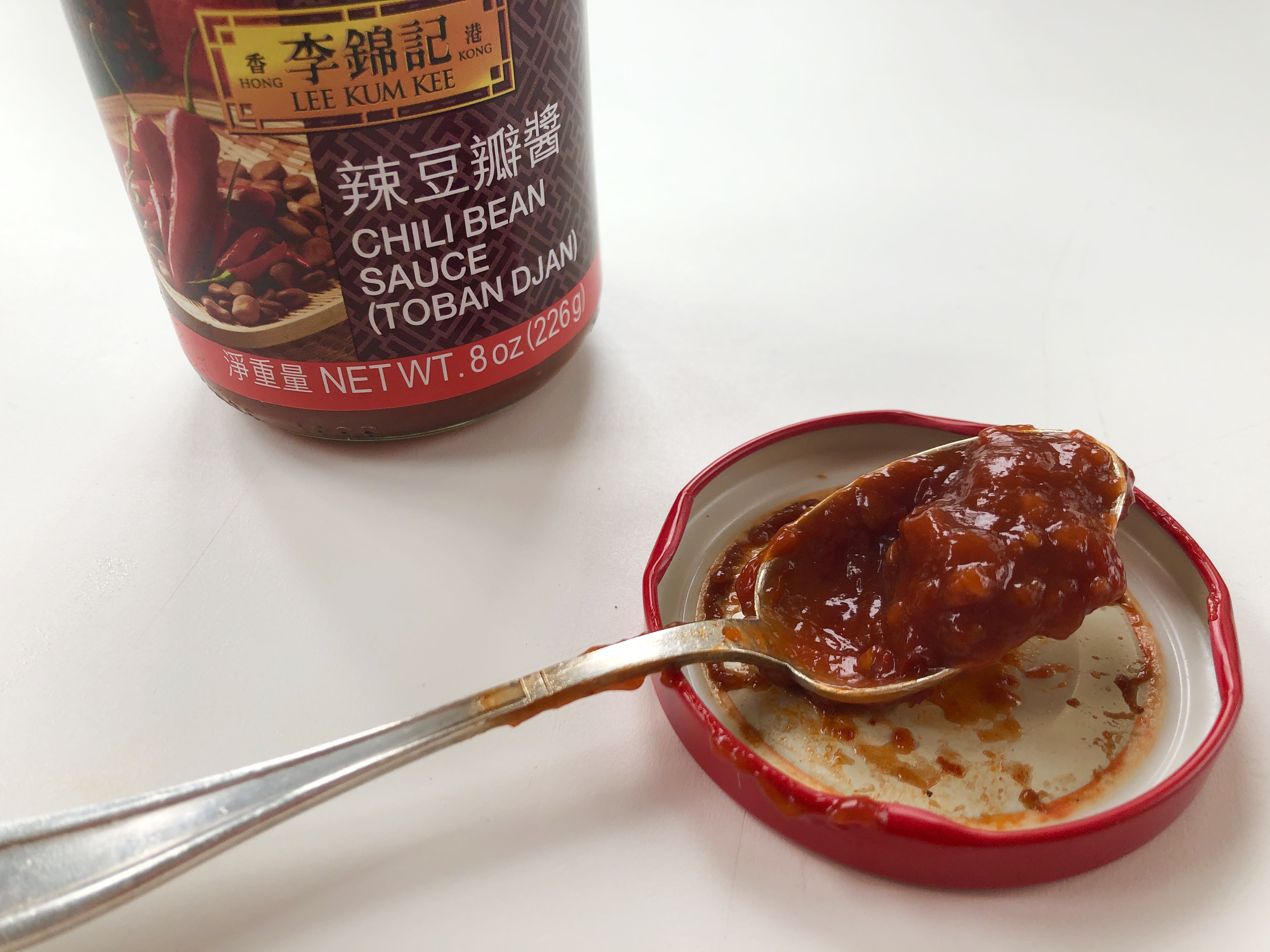
There are countless delicious recipes that showcase the unique flavors of Doubanjiang and Gochujang. Some popular dishes using Doubanjiang include Mapo Tofu, a spicy and flavorful tofu dish, and Kung Pao Chicken, a classic Sichuan dish with a kick of heat. Gochujang is widely used in Korean cuisine, with dishes like Bibimbap, a mixed rice bowl, and Tteokbokki, spicy rice cakes, being standout examples. Both pastes can also be used in marinades, glazes, and dipping sauces, adding depth and complexity to your meals. Try experimenting with these versatile chili pastes to create your own Asian-inspired culinary masterpieces.
Popular Dishes Using Doubanjiang
Popular dishes using Doubanjiang include Mapo Tofu and Kung Pao Chicken. Mapo Tofu is a classic Sichuan dish that features silky tofu simmered in a spicy sauce made with Doubanjiang, ground pork, and Sichuan peppercorns. The Doubanjiang adds a rich umami flavor and a fiery kick to the dish. Kung Pao Chicken, another Sichuan favorite, combines tender chicken, peanuts, and vegetables in a spicy sauce that gets its depth from Doubanjiang. The paste’s complex flavors elevate these dishes, creating a delicious and satisfying meal.
Korean Recipes Featuring Gochujang
Korean cuisine showcases the versatility of gochujang in various flavorful dishes. Some popular recipes include Bibimbap, a mixed rice dish topped with vegetables, meat, and gochujang sauce. Tteokbokki, a spicy rice cake dish, is also commonly made with gochujang. Another favorite is Japchae, a stir-fried noodle dish that often incorporates gochujang for a spicy kick. Gochujang is also used to make flavorful marinades for Korean BBQ, such as bulgogi and galbi. Its sweet, spicy, and savory notes add depth to these dishes, making them a delight for the taste buds.
Conclusion
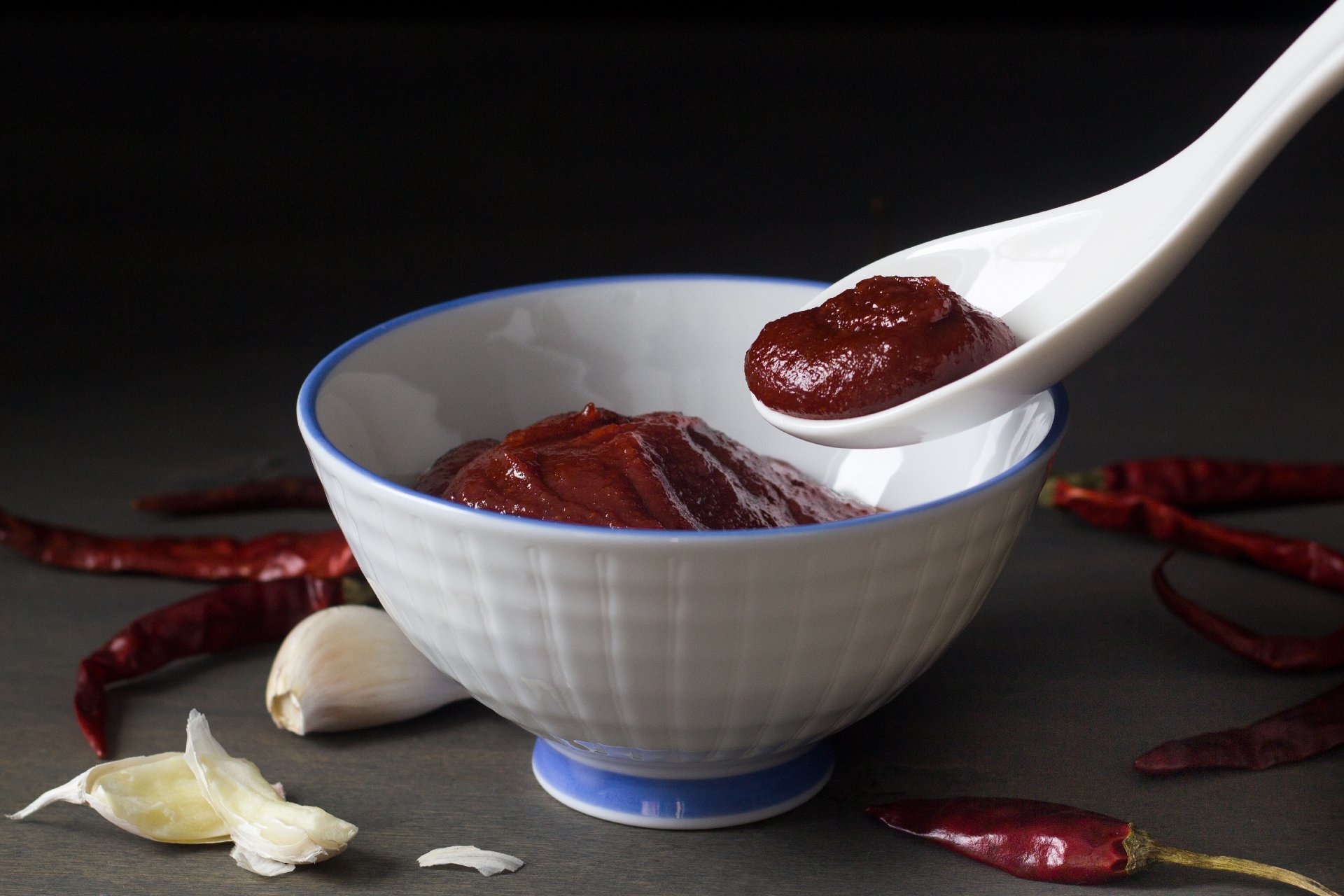
In conclusion, both Doubanjiang and Gochujang are delicious and versatile chili pastes that add depth and complexity to Asian dishes. While Doubanjiang is known for its spicy and fermented flavor, Gochujang offers a unique blend of sweetness, spice, and umami. Each paste brings its own distinct taste to various recipes, allowing for a wide range of culinary possibilities. Whether you’re exploring Sichuan cuisine or delving into Korean cooking, both Doubanjiang and Gochujang are sure to elevate your dishes and satisfy your taste buds. So go ahead and experiment with these flavorful condiments in your next culinary adventure!
Health Benefits And Nutritional Value
Both Doubanjiang and Gochujang offer not only delicious flavors but also some health benefits.
Doubanjiang contains fermented broad beans, which are a good source of protein, dietary fiber, and essential amino acids. It is also rich in vitamins and minerals like iron, magnesium, and potassium. The fermentation process of Doubanjiang enhances the bioavailability of these nutrients.
Gochujang, on the other hand, contains capsaicin, a compound known for its metabolism-boosting properties and potential anti-inflammatory effects. It also provides vitamins like vitamin C and vitamin K, as well as probiotics from the fermentation process.
Both pastes are low in fat and cholesterol, making them a healthier alternative to some other condiments. However, it is important to note that they can be high in sodium, so it is advised to use them in moderation.
Overall, incorporating Doubanjiang and Gochujang into your dishes not only adds flavor but also offers some nutritional benefits.
Choosing Between Doubanjiang And Gochujang For Cooking Applications
When it comes to choosing between Doubanjiang and Gochujang for cooking applications, it ultimately depends on the flavor profile and the type of cuisine you are preparing.
Doubanjiang, with its bold and spicy taste, is an excellent choice for adding depth to Sichuan dishes and other Chinese recipes. Its strong umami flavor pairs well with meats and vegetables.
On the other hand, Gochujang’s unique spiciness and slight sweetness make it perfect for Korean dishes like bibimbap, bulgogi, and kimchi. It adds a tangy and savory kick to marinades, stir-fries, and dipping sauces.
Consider the specific flavors and heat levels you desire, as well as the regional cuisine you are working with, to determine which paste is best suited for your cooking needs.
FAQ About Doubanjiang Vs Gochujang: Contrasting Asian Chili Pastes
Q: What is Doubanjiang?
A: Doubanjiang is a Chinese chili paste made from fermented broad beans, soybeans, salt, rice, and various spices. It adds a spicy and savory flavor to dishes.
Q: What is Gochujang?
A: Gochujang is a Korean chili paste made from red chili powder, glutinous rice, fermented soybean powder, and salt. It has a sweet, spicy, and umami taste profile.
Q: How do Doubanjiang and Gochujang differ in taste?
A: Doubanjiang has a more complex, salty, and slightly fermented taste with a deep umami flavor. Gochujang, on the other hand, is sweeter, spicier, and has a smoother texture.
Q: Can Doubanjiang be substituted for Gochujang in recipes?
A: While both pastes are fermented chili pastes, they have distinct flavors. Substituting Doubanjiang for Gochujang may alter the taste of the dish, but it can still provide a similar level of spiciness.
Q: Are Doubanjiang and Gochujang gluten-free?
A: Generally, both Doubanjiang and Gochujang are gluten-free, but it’s essential to check the ingredients on the packaging as some variations may contain gluten-containing additives.
Q: How are Doubanjiang and Gochujang used in cooking?
A: Doubanjiang is commonly used in Sichuan cuisine for dishes like Mapo Tofu, while Gochujang is a staple in Korean cuisine for making dishes like Bibimbap and Tteokbokki. They can be used as marinades, stir-fry sauces, or condiments to add flavor and spice to various dishes.
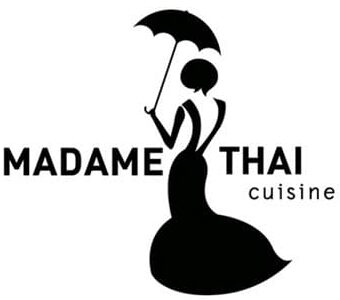
Madame Thai Cuisine is not just a restaurant; it’s a culinary journey through Thailand’s vibrant and diverse flavors. Our story began with a passion for sharing the authentic tastes of Thailand with the world. Situated in the heart of [location], Madame Thai Cuisine has been a beacon of Thai culinary excellence since [year of establishment]. Our commitment to using only the finest and freshest ingredients, combined with traditional cooking techniques, has earned us a reputation as a go-to destination for exquisite Thai dining.